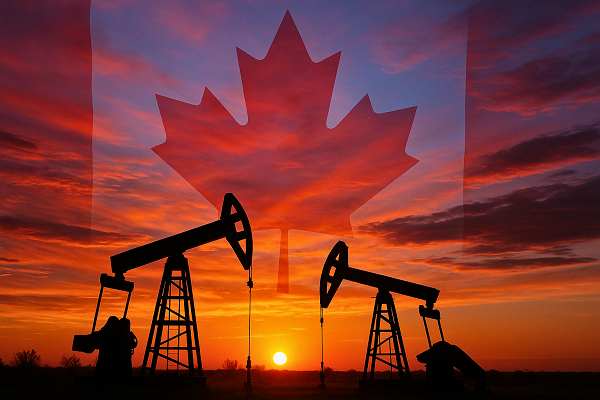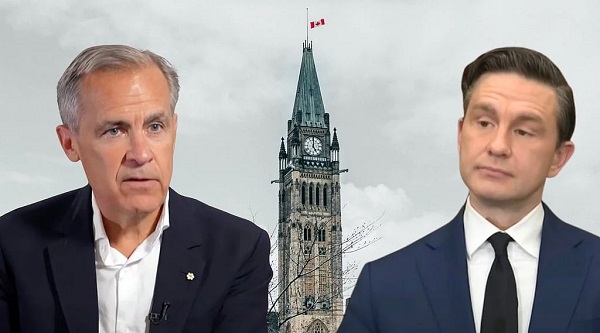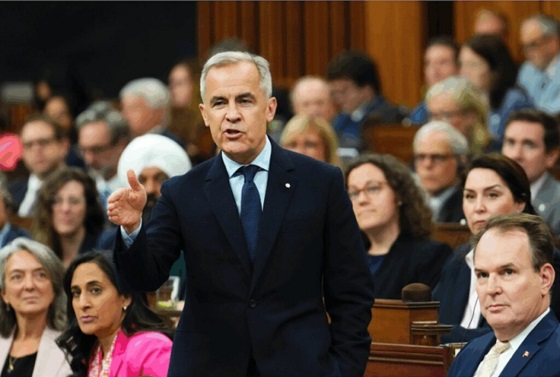Energy
Next prime minister should swiftly dismantle Ottawa’s anti-energy agenda

From the Fraser Institute
Justin Trudeau’s imminent exit from office may mark the beginning of the end of a 10-year war on Canada’s energy sector, and by extension, Canada’s economy.
Canada is the world’s fourth-largest oil producer, currently supplying 6 per cent of global production. Canada is the fifth-largest producer of natural gas, supplying 5 per cent of global demand. The energy sector (oil, gas, electricity) constitutes more than 10 per cent of Canada’s total gross domestic product (GDP). In 2023, the latest year of available data, the energy sector provided, directly and indirectly, almost 700,000 jobs or 3.5 per cent of all jobs in Canada. And Canadian energy exports totalling $200 billion comprised 28 per cent of all Canadian exported goods.
But however vast and vital Canada’s energy sector is our wellbeing, Prime Minister Trudeau worked tirelessly to restrain, restrict, diminish and ultimately “phase out” Canada’s fossil fuel industries. Here are some of the highlights of his war on Canada’s energy sector.
In 2017, Trudeau introduced Bill C-48, which restricts oil tankers off Canada’s west coast and limits the ability of Canada’s oilsands sector to export product to new markets, keeping Canada’s energy resources trapped in a discount-price U.S. market. Also in 2017, much to the fury of many Albertans, Trudeau announced his intention to phase out oilsands production, the foundation of Alberta’s prosperity.
In 2018, Trudeau introduced Bill C-69, which tightened Canada’s environmental assessment process for major infrastructure projects and made the process of obtaining government permission for major energy projects more costly, time-consuming and arbitrary, thus increasing uncertainty across the energy sector. And he introduced the carbon tax despite strenuous opposition by Canada’s energy sector and energy-producing provinces.
In 2020, Trudeau launched his broadest and most intense regulatory crusade against Canada’s energy sector, introducing Bill C-12, which committed Canada to reach “net-zero” emissions of greenhouse gasses by 2050. Net-zero means Canada cannot emit more greenhouse gases via energy production and consumption than is taken out of the air by natural processes and the ecosystem. This would require vastly reduced production and consumption of fossil fuels in Canada, with consequences for the energy sector’s productivity and employment potential moving toward 2050.
In 2023, Trudeau attacked fossil fuel use in the transportation sector by mandating that all new cars sales be electric vehicles by 2035. And he released draft “clean electricity regulations” to phase out the use of fossil fuels in electricity generation by the year 2050.
During his time as prime minister, Trudeau attacked Canada’s energy sector, with eliminationist language and onerous regulations meant to essentially phaseout a major supplier of economic productivity and employment in Canada, to the great detriment of Canadians.
Hopefully, the next prime minister will reject Trudeau’s anti-energy agenda and have the will and ability to rescind the many damaging laws and regulations that that the Trudeau government has inflicted on a vital sector of the Canadian economy.
Energy
Expanding Canadian energy production could help lower global emissions

From the Fraser Institute
By Annika Segelhorst and Elmira Aliakbari
Canada’s most timely opportunity to lower overall global emissions is through expanded exports to regions that rely on higher-emitting fuel sources.
The COP30 climate conference in Brazil is winding down, after more than a week of discussions about environmental policy and climate change. Domestic oil and natural gas production is frequently seen as a fundamental obstacle to Canada’s climate goals. Yet the data shows that Canadian energy production is already among the world’s cleanest, generating lower greenhouse gas (GHG) emissions per barrel-of-oil-equivalent produced, among major producing countries. Expanding the role of Canadian oil and gas in global markets can replace higher GHG-emitting alternatives around the world, driving down global GHG emissions.
Prime Minister Carney’s first budget highlights Canada’s “emissions advantage” in a chart on page 105 that compares the amount of GHG emissions released from producing oil and natural gas across 20 major producing countries. Compared to many other top-producing countries, Canada releases fewer GHG emissions per barrel of oil and gas produced when considering all phases of production (extraction, processing, transport, venting and flaring).
For oil production, Canada has an advantage over most major producers such as Venezuela, Libya, Iran, Algeria, Nigeria, China, Russia and Qatar. Canada’s emissions per barrel of oil produced are below the global average, making Canada among the lower emitting producers worldwide.
Similarly, Canada’s natural gas production has an emissions per barrel equivalent that is lower than the global average and is below major producers such as Turkmenistan, Uzbekistan, Nigeria, Indonesia, China, Argentina, Malaysia, Australia, Algeria, Iran, Russia, India and the United States. The chart below reveals countrywide average GHG emissions per barrel of oil or natural gas produced in 2022.
Source: International Energy Agency (2023), The Oil and Gas Industry in Net Zero Transitions 2023, IEA, Paris, p. 69
Canada’s emissions advantage stems from years of technological innovations that require less energy to produce each barrel of oil along with improvements in detecting leaks. From 1990 to 2023, Canada’s total production of crude oil rose by 199 per cent, while emissions per barrel of oil produced declined by 8 per cent, according to Environment and Climate Change Canada (ECCC). In the oilsands, since 1990 emissions per barrel have fallen by nearly 40 per cent while emissions from natural gas production and processing have decreased by 23 per cent.
Canada has already implemented many of the most practical and straightforward methods for reducing carbon emissions during oil and gas production, like mitigation of methane emissions. These low-hanging fruits, the easiest and most cost-effective ways to reduce emissions, have already been implemented. The remaining strategies to reduce GHG emissions for Canadian oil and gas production will be increasingly expensive and will take longer to implement. One such approach is carbon capture, utilization, and storage (CCUS), a technology which traps and stores carbon dioxide to prevent it from reaching the atmosphere. Major infrastructure projects like this offer potential but will be difficult, costly and resource intensive to implement.
Rather than focusing on increasingly expensive emission reductions at home, Canada’s most timely opportunity to lower overall global emissions is through expanded exports to regions that rely on higher-emitting fuel sources. Under a scenario of expanded Canadian production, countries that presently rely on oil and gas from higher-emitting producers can instead source energy from Canada, resulting in a net reduction in global emissions. Conversely, if Canada were to stagnate or even retreat from the world market for oil and gas, higher-emitting producers would increase exports to accommodate the gap, leading to higher overall emissions.
As Canada’s climate and energy policy continues to evolve, our attention should focus on global impact rather than solely on domestic emissions reductions. The highest environmental impact will come from enabling global consumption to shift towards lower-emitting Canadian sources.
Energy
Here’s what they don’t tell you about BC’s tanker ban

From Resource Works
By Tom Fletcher
Crude oil tankers have sailed and docked on the British Columbia coast for more than 70 years, with no spills
BC Premier David Eby staged a big media event on Nov. 6 to once again restate his opposition to an oil pipeline from Alberta to the Prince Rupert area.
The elaborate ceremony to sign a poster-sized document called the “North Coast Protection Declaration” was dutifully covered by provincial and national media, despite having no actual news content. It is not a response to Alberta’s plan to finance preliminary work on a new oil pipeline, Eby insisted. It’s to confirm the direction of growing the BC economy without, you know, any more oil pipelines.
The event at the opulent Vancouver Convention Centre West was timed to coincide with the annual BC Cabinet and First Nations Leaders Gathering, a diplomatic effort set up 10 years ago by former premier Christy Clark. This year’s event featured more than 1,300 delegates from 200 First Nations and every BC government ministry.
A high-profile event with little real news
The two-day gathering features 1,300 meetings, “plus plenary and discussion sessions on a variety of topics, including major projects, responding to racism, implementation of the Declaration Act, and more,” the premier’s office announced.
Everyone’s taxpayer-funded hotels and expense accounts alone are an impressive boost to the economy. Aside from an opening news conference and the declaration event at the end, the whole thing is closed to the public.
The protection declaration is a partnership between the BC government and the Coastal First Nations, Eby said. As I mentioned in my Oct. 15 commentary, Coastal First Nations sounds like a tribal council, but it isn’t. It’s an environmental group started in the late 1990s by the David Suzuki Foundation, with international eco-foundation funding over the years that led to the current name, Coastal First Nations Great Bear Initiative.
The evolution of the Coastal First Nations initiative
Their current project is the Great Bear Sea, funded by $200 million from the federal government, $60 million from BC, and $75 million from “philanthropic investors.” This is similar to the Great Bear Rainforest conservation project, backed by mostly US billionaire charity funds, that persuaded Justin Trudeau to turn the voluntary tanker exclusion zone into Canadian law.
Leadoff speaker in Vancouver was the current Coastal First Nations president, Heiltsuk Chief Marilyn Slett. She repeated a well-worn story about her remote Central Coast community of Bella Bella still struggling with the effects of an “oil spill” in 2016.
In fact, the 2016 event was the sinking of a tugboat that ran aground while pushing an empty fuel barge back down from Alaska to a refinery in Washington to be refilled. The “oil spill” was the diesel fuel powering the tugboat, which basic chemistry suggests would have evaporated long ago.
Fuel dependence on the remote BC coast
Remote coastal settlements are entirely dependent on fuel shipments, and Bella Bella is no different. It has no road or power grid connections, and the little seaside village is dominated by large fuel tanks that have to be refilled regularly by barge to keep the lights on.

Alaska North Slope crude has been shipped by tanker to Washington and beyond for more than 60 years. Yes, there’s a North Coast “exclusion zone” where US-bound tankers go west around Haida Gwaii rather than down the Inside Passage, but once the ships reach Vancouver Island, they sail inside right past Victoria to refineries at Cherry Point, March Point, and other US stops.
Through the tall windows of the Vancouver convention centre, you can watch Aframax crude tankers sail past under the Second Narrows and Lions Gate bridges, after loading diluted bitumen crude from the expanded Westridge Terminal in Burnaby. That is, of course, the west end of the Trans Mountain Pipeline, which has operated since 1954 with no spills, including the branch line down to the Cherry Point complex.
There are many more crude tankers exiting Vancouver now that the TMX expansion is complete, but they aren’t filled all the way because the Second Narrows is too shallow to allow that. A dredging project is in the works to allow Aframax-sized tankers to fill up.
A global market for Alberta crude emerges
They enter and exit Burrard Inlet surrounded by tethered tugboats to prevent grounding, even if the tanker loses power in this brief stretch of a long voyage that now takes Alberta crude around the world. Since the TMX expansion, shipments that used to go mostly to California now are reaching Korea, Japan, China, Hong Kong, and Singapore as well.
The US captive discount has shrunk, the tripled pipeline capacity is rapidly filling up, and pumping stations are being added. This is the very definition of Mark Carney’s nation-building projects to get Canada out of the red.
The idea that the North Coast can host fuel barges, LNG tankers, bunker-fired cruise ships, and freighters but can’t tolerate Canadian crude along with the US tankers is a silly urban myth.
Tom Fletcher has covered BC politics and business as a journalist since 1984. [email protected]. X: @tomfletcherbc
-

 Health2 days ago
Health2 days agoCDC’s Autism Reversal: Inside the Collapse of a 25‑Year Public Health Narrative
-

 Crime2 days ago
Crime2 days agoCocaine, Manhunts, and Murder: Canadian Cartel Kingpin Prosecuted In US
-

 Health2 days ago
Health2 days agoBREAKING: CDC quietly rewrites its vaccine–autism guidance
-

 National2 days ago
National2 days agoPsyop-Style Campaign That Delivered Mark Carney’s Win May Extend Into Floor-Crossing Gambits and Shape China–Canada–US–Mexico Relations
-

 Energy2 days ago
Energy2 days agoHere’s what they don’t tell you about BC’s tanker ban
-

 Daily Caller2 days ago
Daily Caller2 days agoBREAKING: Globalist Climate Conference Bursts Into Flames
-

 Bruce Dowbiggin2 days ago
Bruce Dowbiggin2 days agoBurying Poilievre Is Job One In Carney’s Ottawa
-

 Great Reset1 day ago
Great Reset1 day agoEXCLUSIVE: A Provincial RCMP Veterans’ Association IS TARGETING VETERANS with Euthanasia










